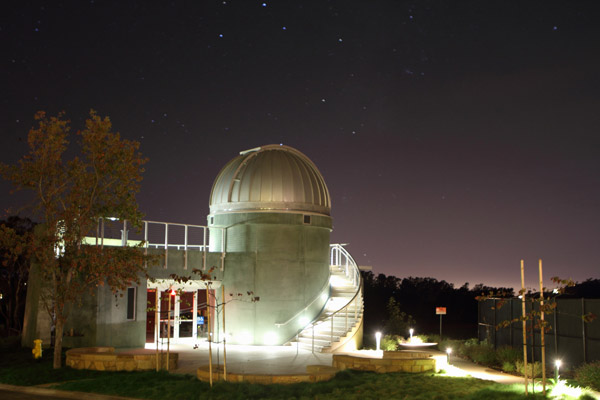Observatory to Host Montecito Star Party

The viewing, held in conjunction with the Santa Barbara Astronomical Unit, generally lasts several hours. In case of inclement weather, please call the Telescope Viewing Hotline at (805) 565-6272 and check the Westmont website to see if the viewing has been cancelled.
Thomas Whittemore, Westmont physics instructor, says if the weather cooperates, the viewing should be spectacular. “With the Moon not rising until after10:30 p.m. we will have free rein over the night sky for a change,” he says.
The center of the Milky Way will be in Sagittarius, high in the southern sky, yielding many viewing options. One of these objects is open cluster M7, also known as Ptolemy’s Cluster, named after the great astronomer and mathematician in the second century A.D. “By stellar standards, the members of this cluster are pretty young — only 220 million years old —and they lie about 880 light years away from us,” Whittemore says. “Remember that, when you are looking at the light from this cluster, it has come to your eyes, essentially undisturbed, from the year 1200. This was about the time when Genghis Khan began his great adventure of world conquest.”
Stargazers will also be interested in viewing the great globular cluster, M13, which will be well positioned at the top of the sky at sunset. “M13 lies some 26,000 light-years away and contains upwards of one million ancient stars,” Whittemore says. The viewing will also include a peek at another globular cluster in Hercules, M92, which Whittemore says is often overlooked at star parties. “Discovered by Johann Bode in 1777 and cataloged by Charles Messier in 1781, M92 was first resolved into stars by William Herschel in 1783,” he says. “It is more compact than its neighbor, M13, but still a spectacular object.”
Also high in the northeast sky is the Ring Nebula, M57, in Lyra. “M57 lies 2,300 light-years away and is the remnants of a dying star, a fate that will someday be our Sun’s,” Whittemore says. “What we will see Friday is the gaseous envelope of what used to be the central star’s atmosphere. The central star, a white dwarf, is faint and can only be seen under pristine, dark-sky conditions.”
The Keck Telescope is housed in the observatory between Russell Carr Field and the track and field/soccer complex. Free parking is available near the baseball field.
